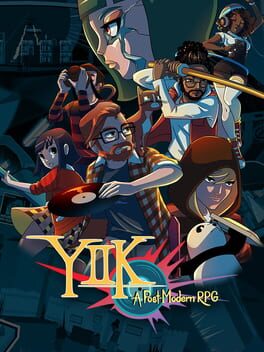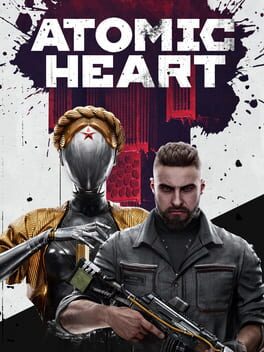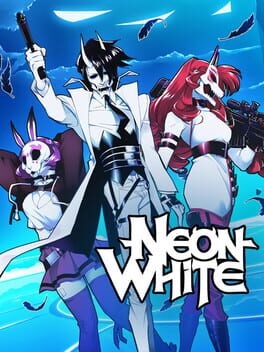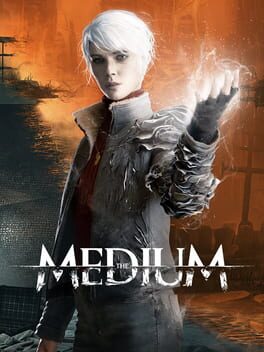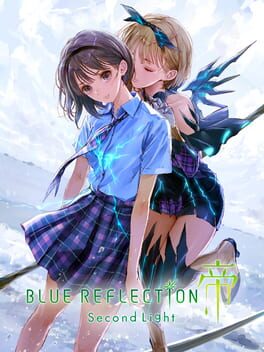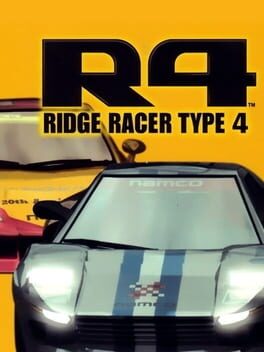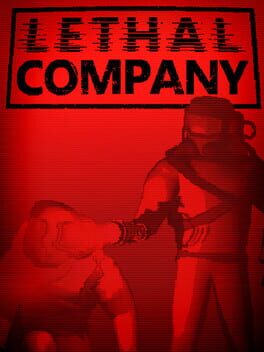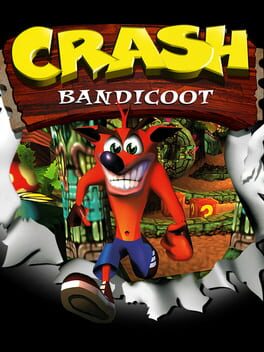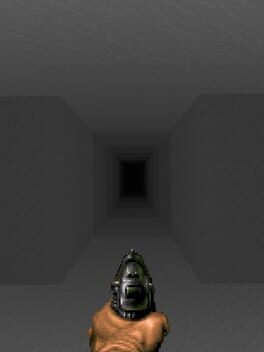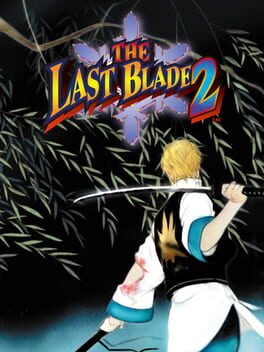Squigglydot
2023
2022
Subsonic steps bound off of idyllic tiles, a steadfast one-two sprint. Clasped tightly in his hand, divine intervention is executed by the thunderclap of .500 magnum, a heavenly send-off alternating between the gentle coaxing of automatic fire and the definitive blade of retribution. Closing in, denizens of hell launch bioluminescent bombardments, lethal brimstone sending you down a path 10,000 feet under. As if born to die, the demons are dispatched as quickly as they rise, beings materialized, analyzed, and pulverized within nanoseconds. Speed and focus become one, repetitions on idealized concepts pointing towards sublimity. Your holy arms holstered, your sanctified sword sheathed, you cast your sight upon diamond excellence, an eternity encapsulated in the blink of an eye. Now, beyond the safety of three-round bursts and lead ripostes, you see her.
Her heliotrope hues leave psychoactive cigarette burns; if true angels drive one to madness, her presence in Heaven is well established. Like sewing needles piercing taut eardrums, her voice spikes out, an aural trepanation. More lethal than chambered rounds and heavy ordinance, she implants in your brain the same innate fear that courses through you as you enter convention halls, the same fight-or-flight micropanic as the first step within a college’s Japanese Culture Club, for she is the eidolon of modern otakudom. When you breach the seal on Neon White’s world, what resides underneath isn’t the long-forgotten Y2K Japanimation mecca, but a puréed distillation of the wretched refuse of anime fandom, the Anitwitter and r/animemes congregation speaking in post-post-ironic references, where every man is either a razor-edged twink or a hulking himbo, and every woman either an e-girl yandere or a wannabe mommy-dom that covets humanized mediocrity. Buried under the pretense of being “by freaks, for freaks”, the reality of Neon White puts you in the nightmarish scenario of living through the dreams of the most typical of indie weeb softboys.
Such is the loop of Neon White: for every moment of precise platforming bliss, an hour of Young Thotticus making your amygdala fire on all cylinders, a century of watching history’s straightest couple verbally hate-fuck, an eon of remembering Tumblr-Sexy-Man-ified Junkrat saying “you were my Sasuke!”, an eternity of knowing that the core message of the game is that you have a moral imperative to forgive those who abused you in life, lest you literally go to Hell. Both sides of the equation, fraught and unstable, struggle to maintain a semblance of balance.
When Ben Esposito, Enemy of the People, claimed this project as a game “for freaks”, it masks the reality of what Neon White stands for. Decked in the style of the forums of yesteryear, Online Signature UI and Neocities buttons intact, with a heart beating to the 200bpm pulse of breakcore, the aestheticism of pre-Web 2.0 culture is broken by the asphyxiating smog of The Modern Anime Fan. Sincerity and passion die at the cross of venomous disingenuity, nailed down by ironic detachment and love in the key of “Waifu of the Month”. The work of Angel Matrix, the latest in rebrands of Esposito's predictable shtick, axes even the most optimistic of readings: Neon White is the new face of pretension, wearing the oh-so-relatable mask of an adored time for the sake of drawing attention, not out of love, nostalgia, or passion. Soullessness masquerading as soulful.
and someone please tell the writers that run-on sentences don’t read as like, relatable or quirky. It just looks bad. It’s like, your job to Make Text Read Good. come on.
Her heliotrope hues leave psychoactive cigarette burns; if true angels drive one to madness, her presence in Heaven is well established. Like sewing needles piercing taut eardrums, her voice spikes out, an aural trepanation. More lethal than chambered rounds and heavy ordinance, she implants in your brain the same innate fear that courses through you as you enter convention halls, the same fight-or-flight micropanic as the first step within a college’s Japanese Culture Club, for she is the eidolon of modern otakudom. When you breach the seal on Neon White’s world, what resides underneath isn’t the long-forgotten Y2K Japanimation mecca, but a puréed distillation of the wretched refuse of anime fandom, the Anitwitter and r/animemes congregation speaking in post-post-ironic references, where every man is either a razor-edged twink or a hulking himbo, and every woman either an e-girl yandere or a wannabe mommy-dom that covets humanized mediocrity. Buried under the pretense of being “by freaks, for freaks”, the reality of Neon White puts you in the nightmarish scenario of living through the dreams of the most typical of indie weeb softboys.
Such is the loop of Neon White: for every moment of precise platforming bliss, an hour of Young Thotticus making your amygdala fire on all cylinders, a century of watching history’s straightest couple verbally hate-fuck, an eon of remembering Tumblr-Sexy-Man-ified Junkrat saying “you were my Sasuke!”, an eternity of knowing that the core message of the game is that you have a moral imperative to forgive those who abused you in life, lest you literally go to Hell. Both sides of the equation, fraught and unstable, struggle to maintain a semblance of balance.
When Ben Esposito, Enemy of the People, claimed this project as a game “for freaks”, it masks the reality of what Neon White stands for. Decked in the style of the forums of yesteryear, Online Signature UI and Neocities buttons intact, with a heart beating to the 200bpm pulse of breakcore, the aestheticism of pre-Web 2.0 culture is broken by the asphyxiating smog of The Modern Anime Fan. Sincerity and passion die at the cross of venomous disingenuity, nailed down by ironic detachment and love in the key of “Waifu of the Month”. The work of Angel Matrix, the latest in rebrands of Esposito's predictable shtick, axes even the most optimistic of readings: Neon White is the new face of pretension, wearing the oh-so-relatable mask of an adored time for the sake of drawing attention, not out of love, nostalgia, or passion. Soullessness masquerading as soulful.
2022
2022
You writhe beneath my skin
Born of ailing flesh and love
My thoughts, consumed by your sorrow.
Waking nightmares plague me, endless
A slow rotting miracle plucked from time,
You are all that I love, everything I fear
And all the entanglement festering between
For want of fair chances,
I stared into your abyss
As I've done for many before
And in return, you tore out my heart,
Impaled my eyes with your scarlet terror
Invaded the privacy of solitude,
And plunged your iron claws into my very soul.
You interrupt my nights.
My days, occupied by you
You are inescapable, yet...
For all your malignance,
Burrowed under flesh
and boiling blood,
I refuse
to let
go
–
Signalis bores its hooks into my skull, carving grooves into my brain where my psychoses pool. There’s something to be said for its reliance on the narrative language of anime and survival horror, but whether it’s derivative or iterative is a moot point. These beats that ring familiar are sores that Signalis splits open with a sadist’s pleasure. I could sit here and rattle off references, the obvious calls that permeate the body of the work, but where does that get you? Where does that get any of us, other than a cognizant “if you know you know” stranglehold? The language of Signalis isn’t concerned with simply being “Space Resident Evil”, or “Utena by way of Evangelion”. Much like the doomed Penrose, the referential nature of Signalis is, in itself, a repetitious time loop. It is not a work of references, it is its references.
I bolt awake, and Signalis presses on the nerve center that kick started my love of horror. 2008, in front of a bombed-out Gamecube, Jill Valentine tinkers though a puzzle box called the Spenser mansion. 2022, I bumblefuck through the escape room that is Sierpinski S-23.
Another restless night, another stab into my brain. 2012, my first pangs of personalized gender misanthropy at the hands of Asuka Langley Sohryu and Rei Ayanami, the brilliant shine of sapphic love reflected by Utena and Anthy. A decade later, the hate has faded and its place remains remorse for the past, regret for the now as the signature flashes of light and text flicker, as LSTR-512 and Ariane waltz in their final moments.
Again, interrupted sleep prevails. October, last year, the clattering of keys clicked out a cacophonous rhythm as I parse out a write up for Illbleed, a game that set ablaze the dying candle that was my love for gaming, for horror as a whole. Now, after a global rotation, I return to Signalis in the same spot, a love for writing, for fear, for gaming, for love itself, rekindled after a seasonal stagnation.
To try to put definitive words to Signalis seems contradictory to the way the game is delivered, indirect and symbolic in a way anathemic to thematic deduction. In it, I saw the spark of life relight my passion, and I enacted swift death to the tyrant, critical analysis. I could brandish lofty terms, of this having flawless gameplay, immersive writing, a memorable soundtrack, or any other terms I would gladly throw around about games that I will forget in a week. It’s not perfect. I don’t want it to be perfect: It’s for me. I don’t need it to be anything more than what it means to me, and what it means is that I think I love games again.
I awaken once more from broken sleep.
It’s 2014. I’m sitting with someone who, at the time, was my closest friend. We’re huddled around a laptop deep into the night, burning through works that would come to reflect what matters to me in games.
It’s tonight. I’m on call with someone I love. I’m huddled over a keyboard, burning through a write-up of a work that redefines what matters to me in games.
Play Signalis. You probably won’t get what I got out of it. That’s a good thing; it means there’s going to be something else out there that gives you the same feelings that this gave me. For now, I can push you to try a game I view as my personal perfection.
Born of ailing flesh and love
My thoughts, consumed by your sorrow.
Waking nightmares plague me, endless
A slow rotting miracle plucked from time,
You are all that I love, everything I fear
And all the entanglement festering between
For want of fair chances,
I stared into your abyss
As I've done for many before
And in return, you tore out my heart,
Impaled my eyes with your scarlet terror
Invaded the privacy of solitude,
And plunged your iron claws into my very soul.
You interrupt my nights.
My days, occupied by you
You are inescapable, yet...
For all your malignance,
Burrowed under flesh
and boiling blood,
I refuse
to let
go
–
Signalis bores its hooks into my skull, carving grooves into my brain where my psychoses pool. There’s something to be said for its reliance on the narrative language of anime and survival horror, but whether it’s derivative or iterative is a moot point. These beats that ring familiar are sores that Signalis splits open with a sadist’s pleasure. I could sit here and rattle off references, the obvious calls that permeate the body of the work, but where does that get you? Where does that get any of us, other than a cognizant “if you know you know” stranglehold? The language of Signalis isn’t concerned with simply being “Space Resident Evil”, or “Utena by way of Evangelion”. Much like the doomed Penrose, the referential nature of Signalis is, in itself, a repetitious time loop. It is not a work of references, it is its references.
I bolt awake, and Signalis presses on the nerve center that kick started my love of horror. 2008, in front of a bombed-out Gamecube, Jill Valentine tinkers though a puzzle box called the Spenser mansion. 2022, I bumblefuck through the escape room that is Sierpinski S-23.
Another restless night, another stab into my brain. 2012, my first pangs of personalized gender misanthropy at the hands of Asuka Langley Sohryu and Rei Ayanami, the brilliant shine of sapphic love reflected by Utena and Anthy. A decade later, the hate has faded and its place remains remorse for the past, regret for the now as the signature flashes of light and text flicker, as LSTR-512 and Ariane waltz in their final moments.
Again, interrupted sleep prevails. October, last year, the clattering of keys clicked out a cacophonous rhythm as I parse out a write up for Illbleed, a game that set ablaze the dying candle that was my love for gaming, for horror as a whole. Now, after a global rotation, I return to Signalis in the same spot, a love for writing, for fear, for gaming, for love itself, rekindled after a seasonal stagnation.
To try to put definitive words to Signalis seems contradictory to the way the game is delivered, indirect and symbolic in a way anathemic to thematic deduction. In it, I saw the spark of life relight my passion, and I enacted swift death to the tyrant, critical analysis. I could brandish lofty terms, of this having flawless gameplay, immersive writing, a memorable soundtrack, or any other terms I would gladly throw around about games that I will forget in a week. It’s not perfect. I don’t want it to be perfect: It’s for me. I don’t need it to be anything more than what it means to me, and what it means is that I think I love games again.
I awaken once more from broken sleep.
It’s 2014. I’m sitting with someone who, at the time, was my closest friend. We’re huddled around a laptop deep into the night, burning through works that would come to reflect what matters to me in games.
It’s tonight. I’m on call with someone I love. I’m huddled over a keyboard, burning through a write-up of a work that redefines what matters to me in games.
Play Signalis. You probably won’t get what I got out of it. That’s a good thing; it means there’s going to be something else out there that gives you the same feelings that this gave me. For now, I can push you to try a game I view as my personal perfection.
2021
Somehow every review I write on this ends up
hampered by issues in clarity,
issues of both creative phrasing and,
technically, meaningful content.
For certain, my critique on the game is simple;
on any grounds, the writing and story are harmful,
routinely espousing the most toxic of views towards victims.
Clearly, Bloober Team relies on shock tactics to earn clout, an
underhanded attempt to earn viral attention through harmful
notions and rhetoric. I'm not writing in clearest terms, and
that could be chalked up to being tired of thinking about this
shit for cunts.
hampered by issues in clarity,
issues of both creative phrasing and,
technically, meaningful content.
For certain, my critique on the game is simple;
on any grounds, the writing and story are harmful,
routinely espousing the most toxic of views towards victims.
Clearly, Bloober Team relies on shock tactics to earn clout, an
underhanded attempt to earn viral attention through harmful
notions and rhetoric. I'm not writing in clearest terms, and
that could be chalked up to being tired of thinking about this
shit for cunts.
2022
This review contains spoilers
Rise unhindered, augur of darkness. Your life is one defined by many behind you, of furtive pygmies and bearers of wretched curses, where chosen undead and champions of ash spill blood and reap countless souls in the unbroken climb towards an insurmountable goal. The Age of Fire has burnt out, The Hunt has concluded, and atop the carnage of a million shambling corpses, you stand triumphant. However, time flows unceasingly, and with it, the memories of the past become one with the ether, and a valiant hero is called to usher in a new era. Hunters all, Kindred, Chosen, and Cursed, flow into a corporeal amalgam. Awaken, Tarnished. Raise your blade in the face of yet another unending struggle, and earn your place in the hollow halls of history. A tale told in cyclical fashion, the story repeats anew, Soulsborne by way of AI generation.
Elden Ring survives off of a concentrated slurry of highlights from From Software’s extended catalog, a regurgitation of recollections better left to the past. Mechanically, narratively, thematically, down to the aesthetics of the Lands Between, the world speaks in jumbled Dark Fantasy Mad Libs and “If [X] than [Y]” statements carefully pruned from its predecessors. Run through the gameplay loop with me: You, a Hollow – I mean, Tarnished, must fight against unbearable odds, earning Souls – er, Ruins, which you spend at a Bonfi– Lost Grace, while exploring desiccated castles, rotting villages, and vile swamps, all in the name ofEnding the Age of Fire Becoming the Elden Lord and ringing in the Age of Darkness Stars.
It is impossible to put into words how much Elden Ring thrives off of being derivative, which… hurts, considering From Software's obvious skill at what they do. The formula of a Souls game has been perfected to science here, but in the process of refining it over a decade, the eponymous soul of the series has faded. What remains, a slideshow of “best of” snapshots, seeks to embolden dedicated fans of the Souls series into believing this is the definitive experience, a shambling husk wearing the skin of innovation.
None of this is to say that the game doesn’t have its moments, but the issue lies in repetition. Elden Ring is a vast void, a massive blank canvas splattered with algorithmic strokes, “content-aware fill” as a design principle. Case in point, the Tree Sentinel exists as the first truly foreboding enemy you encounter, an indestructible knight that aims to smash and skewer Tarnished too brave to give up and too stupid to run. However, the memories associated with that first conflict muddle when he returns… But There’s Two Of Him. Or even further on, where a third match-up happens, with the key difference being “do bigger numbers”. Let's not get into the many times Godrick is thrown at the player as a threat, over and over and over again.
For something derived from Dark Souls, it's painful to see how soulless this successor feels. Mechanically, systematically, it’s fine, but there’s no real passion or love found beneath the surface. Writing too deeply about it almost feels wasteful: It’s Dark Souls Again. If you want Dark Souls, here it is, almost entirely unaltered. If you don’t, this is still Dark Souls, you’ll get nothing new out of it. The Age of Stars extends its icy reach to the cosmos, and all I can do is recollect on nostalgia's frozen embrace.
Elden Ring survives off of a concentrated slurry of highlights from From Software’s extended catalog, a regurgitation of recollections better left to the past. Mechanically, narratively, thematically, down to the aesthetics of the Lands Between, the world speaks in jumbled Dark Fantasy Mad Libs and “If [X] than [Y]” statements carefully pruned from its predecessors. Run through the gameplay loop with me: You, a Hollow – I mean, Tarnished, must fight against unbearable odds, earning Souls – er, Ruins, which you spend at a Bonfi– Lost Grace, while exploring desiccated castles, rotting villages, and vile swamps, all in the name of
It is impossible to put into words how much Elden Ring thrives off of being derivative, which… hurts, considering From Software's obvious skill at what they do. The formula of a Souls game has been perfected to science here, but in the process of refining it over a decade, the eponymous soul of the series has faded. What remains, a slideshow of “best of” snapshots, seeks to embolden dedicated fans of the Souls series into believing this is the definitive experience, a shambling husk wearing the skin of innovation.
None of this is to say that the game doesn’t have its moments, but the issue lies in repetition. Elden Ring is a vast void, a massive blank canvas splattered with algorithmic strokes, “content-aware fill” as a design principle. Case in point, the Tree Sentinel exists as the first truly foreboding enemy you encounter, an indestructible knight that aims to smash and skewer Tarnished too brave to give up and too stupid to run. However, the memories associated with that first conflict muddle when he returns… But There’s Two Of Him. Or even further on, where a third match-up happens, with the key difference being “do bigger numbers”. Let's not get into the many times Godrick is thrown at the player as a threat, over and over and over again.
For something derived from Dark Souls, it's painful to see how soulless this successor feels. Mechanically, systematically, it’s fine, but there’s no real passion or love found beneath the surface. Writing too deeply about it almost feels wasteful: It’s Dark Souls Again. If you want Dark Souls, here it is, almost entirely unaltered. If you don’t, this is still Dark Souls, you’ll get nothing new out of it. The Age of Stars extends its icy reach to the cosmos, and all I can do is recollect on nostalgia's frozen embrace.
2010
This review contains spoilers
Some say he tore through the Mojave, a revenant hellbent on destruction. Others claimed she burned with righteous glory, a beacon of justice scorching the unjust, and others still claim they were just a kleptomaniac out to have a good time. Hell, I’ve heard they fell through the earth and woke up in D.C., that their mere presence would make you feel like your brain would stop processing, that they could carry a thousand pounds and run faster than the devil. End of the day, the trivia of the how and when barely matter as much as the “who”.
A decade ago, a batch of couriers set out with cargo bound to New Vegas. The whole lot of them carried worthless trinkets across the sands, a batch of diversions and a single Platinum Chip. Five couriers made it to New Vegas unscathed. Lady Luck must have had it out for the last poor bastard; the only package that mattered was signed off with two shots to the head and a shallow grave. That should’ve been the end of it, another nameless body lost to wasteland, but be it by fate, fury or spite, the dead man walked. Wasn't even two days later that the thief in the checkered suit was gunned down, 9mm justice ringing red hot. Within a week, President Kimball lost his head, the Followers of the Apocalypse were a smoking crater, the Brotherhood of Steel suffered a fatal error, and Caesar himself fell to the knife's edge. Crazy son of a gun even took the Strip by siege, running some police state ops under the table. Or at least, that's how I've heard it told.
When all is said and done, the devil's in the details. The Courier was just as much a sinner as a saint, but anyone could tell you that. Hell, I'd go as far as to say the moment-to-moment minutia doesn't matter; who cares that she traveled with a former 1st Recon sniper, or a whisky-chugging cowpoke? Will anyone remember the ghoul mechanic, the robo-dog, the Enclave reject, or the schizophrenic Nightkin?
No, even as the figurehead of The Strip, no one can really pin down the story in a way everyone can agree on. You'll hear a thousand stories, and the only two consistent factors are that some poor delivery boy got his brains blown out, and that when the dust settled, the Mohave was never quite the same. But listen to me rattle on… you know all of this. After all, that's exactly how you wanted it, right?
When you picked that platinum chip off of Benny, riddled with holes, you knew what you were doing, didn't you? How could you not; it wasn't the first time you shot the boy down. Last time, it was a Ripper to the gut, this time his own gun to the back of the head. Did everyone every figure out how Maria was in your hand and in his back pocket? When the mighty Courier crushed the Great Khans beneath their heel, did you so much as flinch, or was this just another quest in your wild wasteland? Even with cannibals licking their lips with you in their eyes, you smiled, like this was an old joke reminding you of better times.
A decade ago, you woke up in Doc Mitchell's practice, head like a hole with a big iron on your hip. Now, you're back in Goodsprings. Everyone acts like this is new, fresh, like you haven't done this a thousand times over. I know this story, you know it even better. Still, it's hard to stop yourself from doing the same old song and dance, isn't it? For as much as patrolling the Mojave can make you wish for a nuclear winter, you keep coming back. It's not just war; nothing about the desert ever changes. But that's just how you like it, isn't it, Courier?
Vegas never changes. You never change.
A decade ago, a batch of couriers set out with cargo bound to New Vegas. The whole lot of them carried worthless trinkets across the sands, a batch of diversions and a single Platinum Chip. Five couriers made it to New Vegas unscathed. Lady Luck must have had it out for the last poor bastard; the only package that mattered was signed off with two shots to the head and a shallow grave. That should’ve been the end of it, another nameless body lost to wasteland, but be it by fate, fury or spite, the dead man walked. Wasn't even two days later that the thief in the checkered suit was gunned down, 9mm justice ringing red hot. Within a week, President Kimball lost his head, the Followers of the Apocalypse were a smoking crater, the Brotherhood of Steel suffered a fatal error, and Caesar himself fell to the knife's edge. Crazy son of a gun even took the Strip by siege, running some police state ops under the table. Or at least, that's how I've heard it told.
When all is said and done, the devil's in the details. The Courier was just as much a sinner as a saint, but anyone could tell you that. Hell, I'd go as far as to say the moment-to-moment minutia doesn't matter; who cares that she traveled with a former 1st Recon sniper, or a whisky-chugging cowpoke? Will anyone remember the ghoul mechanic, the robo-dog, the Enclave reject, or the schizophrenic Nightkin?
No, even as the figurehead of The Strip, no one can really pin down the story in a way everyone can agree on. You'll hear a thousand stories, and the only two consistent factors are that some poor delivery boy got his brains blown out, and that when the dust settled, the Mohave was never quite the same. But listen to me rattle on… you know all of this. After all, that's exactly how you wanted it, right?
When you picked that platinum chip off of Benny, riddled with holes, you knew what you were doing, didn't you? How could you not; it wasn't the first time you shot the boy down. Last time, it was a Ripper to the gut, this time his own gun to the back of the head. Did everyone every figure out how Maria was in your hand and in his back pocket? When the mighty Courier crushed the Great Khans beneath their heel, did you so much as flinch, or was this just another quest in your wild wasteland? Even with cannibals licking their lips with you in their eyes, you smiled, like this was an old joke reminding you of better times.
A decade ago, you woke up in Doc Mitchell's practice, head like a hole with a big iron on your hip. Now, you're back in Goodsprings. Everyone acts like this is new, fresh, like you haven't done this a thousand times over. I know this story, you know it even better. Still, it's hard to stop yourself from doing the same old song and dance, isn't it? For as much as patrolling the Mojave can make you wish for a nuclear winter, you keep coming back. It's not just war; nothing about the desert ever changes. But that's just how you like it, isn't it, Courier?
Vegas never changes. You never change.
What makes a person who they are is an endless ocean of choices, decisions, and mistakes. It’s nearly impossible to sum up the human experience succinctly, no matter how you go about it, but the past always returns as a unifying factor. Going through life, with every fleeting moment influencing, or influenced by, an infinite amount of moments, what gives someone that unique spark among the almost eight-billion could be condensed to the minutiae of human life, the trials and tribulations of living on Earth. Each trauma, each miracle, every fear and passion, coalescing into an approximation of humanity, the individual soul.
Blue Reflection: Second Light initially seems wrapped up in this hypothesis, with memories and recollections of the past at the forefront of determining who we are. Waltzing across each character’s reified backstory, a physical representation of themselves, the keypoint in coming to terms with oneself is found in accepting what came before. Throughout the story, however, there’s this constant rhetorical question being asked, an implication that shines doubt what you are approaching as a goal. As you weave between the collective backgrounds of the game’s cast, the detours through the various Heartscapes becomes secondary until… something happens. Somewhere between spending precious hours beside these characters and learning their experiences one by one, Blue Reflection… opens up. The narrative isn’t about "the before", the uncountable and infinite universe of outcomes that fused into what becomes an individual. The "past" isn’t “you”, so much as it’s context for “you”. What makes someone who they are after that, in the moment, is just as much the bonds they share, the loves that flourish, the passions ignited and fears embraced, as it is an arbitrary “past”.
…It’s sort of inescapable that this game is focused on the meaning of “moving on”. The summer vacation framing, the constant allusion to people not wanting things to end, the oppressing fear of what comes next and the change it brings… The future as we know it is beyond the horizon, endlessly far off but within reach, all the same. What happens to the friendships we made, the stories we’ve told and moments we’ve shared, five years from now? Ten? Fifty? Facing the crossroads at the end of an era, what will you take away, and what will you leave behind? Even looking at Backloggd itself, it eventually vanishing is a sure-fire possibility. Not now, maybe not in the near future, but… what do you do with that? For most, this site, the one-liner reviews, the heartfelt tangents, the caustic arguments, will all vanish without a trace, while others will hold the memories earned here close, all gained by sharing a passion with, to be blunt, total strangers.
Inevitably, this will end, and we’ll all move to new corners, a sort of “moving on” itself. But is that necessarily a bad thing? If the site died tomorrow and the community surrounding it shriveled up, would that change the love and hate that went into the words etched into it? Just as the past gave context to who we are now, does this community become another page of backstory, a background to appreciate as we move onto the next thing?
…These are some thoroughly navel-gazey thoughts brought out by what could be surmised as a “cute-girls-doing-cute-things” game, and I won’t pretend I haven’t gone off on similar tangents for an endless slew of slice-of-life anime. But over the entirety of Second Light, with every new character thrown into the party, I saw a familiar face, a person I recognized personally. Chalk it up to great writing, or chalk it up to me seeing what I want to see. I’ve seen these stories, not in a “trite anime trope” way, but in a “I know someone like this” sense, and even on a niche video game logging site I’ve seen the people who are deftly portrayed in Blue Reflection. I won’t go as far as to say this is an essential introspective reflection on community or something pompous like that. I’d imagine for most crowds, this will come off as a very well done character-focused slow burn, and that itself is by no-means a negative reading. But I suppose I can only say this, the story, what it meant in the grand scheme of things, hit me at the right time.
Blue Reflection: Second Light initially seems wrapped up in this hypothesis, with memories and recollections of the past at the forefront of determining who we are. Waltzing across each character’s reified backstory, a physical representation of themselves, the keypoint in coming to terms with oneself is found in accepting what came before. Throughout the story, however, there’s this constant rhetorical question being asked, an implication that shines doubt what you are approaching as a goal. As you weave between the collective backgrounds of the game’s cast, the detours through the various Heartscapes becomes secondary until… something happens. Somewhere between spending precious hours beside these characters and learning their experiences one by one, Blue Reflection… opens up. The narrative isn’t about "the before", the uncountable and infinite universe of outcomes that fused into what becomes an individual. The "past" isn’t “you”, so much as it’s context for “you”. What makes someone who they are after that, in the moment, is just as much the bonds they share, the loves that flourish, the passions ignited and fears embraced, as it is an arbitrary “past”.
…It’s sort of inescapable that this game is focused on the meaning of “moving on”. The summer vacation framing, the constant allusion to people not wanting things to end, the oppressing fear of what comes next and the change it brings… The future as we know it is beyond the horizon, endlessly far off but within reach, all the same. What happens to the friendships we made, the stories we’ve told and moments we’ve shared, five years from now? Ten? Fifty? Facing the crossroads at the end of an era, what will you take away, and what will you leave behind? Even looking at Backloggd itself, it eventually vanishing is a sure-fire possibility. Not now, maybe not in the near future, but… what do you do with that? For most, this site, the one-liner reviews, the heartfelt tangents, the caustic arguments, will all vanish without a trace, while others will hold the memories earned here close, all gained by sharing a passion with, to be blunt, total strangers.
Inevitably, this will end, and we’ll all move to new corners, a sort of “moving on” itself. But is that necessarily a bad thing? If the site died tomorrow and the community surrounding it shriveled up, would that change the love and hate that went into the words etched into it? Just as the past gave context to who we are now, does this community become another page of backstory, a background to appreciate as we move onto the next thing?
…These are some thoroughly navel-gazey thoughts brought out by what could be surmised as a “cute-girls-doing-cute-things” game, and I won’t pretend I haven’t gone off on similar tangents for an endless slew of slice-of-life anime. But over the entirety of Second Light, with every new character thrown into the party, I saw a familiar face, a person I recognized personally. Chalk it up to great writing, or chalk it up to me seeing what I want to see. I’ve seen these stories, not in a “trite anime trope” way, but in a “I know someone like this” sense, and even on a niche video game logging site I’ve seen the people who are deftly portrayed in Blue Reflection. I won’t go as far as to say this is an essential introspective reflection on community or something pompous like that. I’d imagine for most crowds, this will come off as a very well done character-focused slow burn, and that itself is by no-means a negative reading. But I suppose I can only say this, the story, what it meant in the grand scheme of things, hit me at the right time.
2006
dog i hate it here so much. i'm minding my own business, poisoning random passerbys with my Pimpy Son Opp, when this guy with a fuck-off arm walks up and starts doing Rising Tackles on my boys. He kicked one of them in the nuts and a crowd cheered. we're in the middle of the desert. I hit him with a club and then he started crying and we all felt really bad. Where's Jagi man. this shit blows, I want to go home.
1998
The peak in aesthetics in arcade racers. Nothing hits like the buildup to Shooting Hoops, backed by one of the strongest soundtracks the PS1 has to its name. Beyond the music, this flawless techno / d'n'b mix, the presentation of this game, namely the audio-visual design of the game, culminates into this ultra slick, pristine visage of early 2000s style.
Mechanically, you're looking at drift heaven, impeccably smooth driving centered careening down straightaways and power sliding around hairpin turns, with the Grand Prix giving you this gradual growth from the easy-breezy pace of 90mph to the breakneck pace of 200mph, all through the lens of progress through heats, the games progression gates that small bit of tension to push to qualify, break through to the new batch of racetracks. Giving each race team a unique (and variable, depending on your skill) storyline gives that extra push to make you feel special about landing that first place victory.
Ridge Racer Type 4 is a love-letter to speed, to the arcade, to Namco as a brand. Amazing game.
Mechanically, you're looking at drift heaven, impeccably smooth driving centered careening down straightaways and power sliding around hairpin turns, with the Grand Prix giving you this gradual growth from the easy-breezy pace of 90mph to the breakneck pace of 200mph, all through the lens of progress through heats, the games progression gates that small bit of tension to push to qualify, break through to the new batch of racetracks. Giving each race team a unique (and variable, depending on your skill) storyline gives that extra push to make you feel special about landing that first place victory.
Ridge Racer Type 4 is a love-letter to speed, to the arcade, to Namco as a brand. Amazing game.
2023
1996
Recommended by [maradona as part of this list! ]
As one of the key contributors to the brand identity of Sony’s gaming wheelhouse, Naughty Dog has centered itself as a pillar of prestige gaming, an ideologue pristinely focused on scavenging pop cultural landmarks on a relentless tear to put video games on a creative pedestal, sullying the individuality inherent to the medium in favor of some perceived notion of being considered “art”. Where we find the studio now, aping Indiana Jone’s blockbuster exploits in Uncharted and cutting surface-level highlight reels of post-apocalyptica in The Last of Us, exists primarily as a production house for wannabe-films in the name of cinematic gaming, but tracing back through the history of the developers work shows off a lost pedigree. Severed from the modern image of today, the Naughty Dog of the mid 90s was a beast cut from a different cloth, a proponent of the infamous Mascot Wars that defined the generation.
While the adage doesn't ring true today, the common knowledge of the 90s held that console exclusives and brand identity were the sword and shield brandished by the gaming industry. On the hallowed ground of internet forums, the nu-playground politics of the console war were waged equally in tech specs and pretty faces. By the time Sony entered the fray the battlefield was already established, with Sega and Nintendo locked in an eternal struggle for relevance. Competitors had risen, fallen, and been cast aside, but Sony remained as the last man standing against the twin behemoths. The dual-sided clash saw fit to tear the fate of the console market asunder, rendered desolate in the shockwave of mutually-assured destruction… Until he, the bearer of Sony’s curse, rose from primordial depths. Branded with the mark of enmity, the flag-bearer of PlayStation’s campaign cast a mocking shadow over the decade. Born into strife, with the serrated edge of the attitude era gripped tightly in his paw, Crash Bandicoot dug into his trench, grubby paws grasping for cultural leverage.
Mel Blanc-ian, a comic centerpiece made as much as a figurehead, Crash was the perfect scapegoat, an idol to cherish and ridicule in equal measure. A jester on the battleground of the modern technobandit, the mascot of yore breathed life into the indefinite scuffle that is brand identity. Becoming synonymous with genres and companies all their own, mascots, especially those in the realm of the mascot platformer, became analogous for not only the series and franchises they encompassed, but for the consoles they inhabited as well. Sega had Sonic, Nintendo had Mario, and Sony, fresh out the gate, had Crash Bandicoot, the mass-production beast forged by the wreckage of a thousand prototypes. The role, aside from poking fun at corporate rivals, was purely accessory, but as touchstones in the memories forged in the scorched earth of Gamefaqs forums, the mascot became an inescapable notion.
Years have since passed, and the Mascot Wars have drawn to the close. While some, the ever stalwart, cling to delusions of supremacy, the giants of the conflict settled into uneasy truces. With the three leaders co-mingling, interweaving, the tribalism of the past decades remains spoken in hushed whispers. Sega's great defeat in the Summer of 2001 saw the colossus fall, not by Nintendo's hand, or even by Microsoft's emerald super-soldier, but at the blade of Sony's masterwork, the PlayStation 2. With the fall of the esteemed leader, the war flickered, faded and died. However, for every victory, the heroes of the past are just as easily forgotten: with success coordinated in equal part by masters of tactical espionage and gods of war, the mascots that defined history were brushed away, hardened cynicism overtaking the endearing face of plucky spirit. Crash, Sly, Croc, even the maligned Gex, all shunned by the tides of time.
The era defined by the mascot has long since passed. Yes, false idols clammer to the throne, halls besieged by Hat Kids and Yooka-Laylees, but the original generation has faded, gussied up only to be showboated in recollections and remasterings. The soul, flickering against the growing cynicism of the game industry, now rests as post-ironic detached nostalgia.
…none of this has anything to do with the actual game of Crash Bandicoot, and that’s because there’s very little to say about Crash Bandicoot. Like any property in the 90s that uses the aesthetics of tribal villages, shockingly racist! Literally my only comment on the content of the game itself. ¯\(ツ)/¯
As one of the key contributors to the brand identity of Sony’s gaming wheelhouse, Naughty Dog has centered itself as a pillar of prestige gaming, an ideologue pristinely focused on scavenging pop cultural landmarks on a relentless tear to put video games on a creative pedestal, sullying the individuality inherent to the medium in favor of some perceived notion of being considered “art”. Where we find the studio now, aping Indiana Jone’s blockbuster exploits in Uncharted and cutting surface-level highlight reels of post-apocalyptica in The Last of Us, exists primarily as a production house for wannabe-films in the name of cinematic gaming, but tracing back through the history of the developers work shows off a lost pedigree. Severed from the modern image of today, the Naughty Dog of the mid 90s was a beast cut from a different cloth, a proponent of the infamous Mascot Wars that defined the generation.
While the adage doesn't ring true today, the common knowledge of the 90s held that console exclusives and brand identity were the sword and shield brandished by the gaming industry. On the hallowed ground of internet forums, the nu-playground politics of the console war were waged equally in tech specs and pretty faces. By the time Sony entered the fray the battlefield was already established, with Sega and Nintendo locked in an eternal struggle for relevance. Competitors had risen, fallen, and been cast aside, but Sony remained as the last man standing against the twin behemoths. The dual-sided clash saw fit to tear the fate of the console market asunder, rendered desolate in the shockwave of mutually-assured destruction… Until he, the bearer of Sony’s curse, rose from primordial depths. Branded with the mark of enmity, the flag-bearer of PlayStation’s campaign cast a mocking shadow over the decade. Born into strife, with the serrated edge of the attitude era gripped tightly in his paw, Crash Bandicoot dug into his trench, grubby paws grasping for cultural leverage.
Mel Blanc-ian, a comic centerpiece made as much as a figurehead, Crash was the perfect scapegoat, an idol to cherish and ridicule in equal measure. A jester on the battleground of the modern technobandit, the mascot of yore breathed life into the indefinite scuffle that is brand identity. Becoming synonymous with genres and companies all their own, mascots, especially those in the realm of the mascot platformer, became analogous for not only the series and franchises they encompassed, but for the consoles they inhabited as well. Sega had Sonic, Nintendo had Mario, and Sony, fresh out the gate, had Crash Bandicoot, the mass-production beast forged by the wreckage of a thousand prototypes. The role, aside from poking fun at corporate rivals, was purely accessory, but as touchstones in the memories forged in the scorched earth of Gamefaqs forums, the mascot became an inescapable notion.
Years have since passed, and the Mascot Wars have drawn to the close. While some, the ever stalwart, cling to delusions of supremacy, the giants of the conflict settled into uneasy truces. With the three leaders co-mingling, interweaving, the tribalism of the past decades remains spoken in hushed whispers. Sega's great defeat in the Summer of 2001 saw the colossus fall, not by Nintendo's hand, or even by Microsoft's emerald super-soldier, but at the blade of Sony's masterwork, the PlayStation 2. With the fall of the esteemed leader, the war flickered, faded and died. However, for every victory, the heroes of the past are just as easily forgotten: with success coordinated in equal part by masters of tactical espionage and gods of war, the mascots that defined history were brushed away, hardened cynicism overtaking the endearing face of plucky spirit. Crash, Sly, Croc, even the maligned Gex, all shunned by the tides of time.
The era defined by the mascot has long since passed. Yes, false idols clammer to the throne, halls besieged by Hat Kids and Yooka-Laylees, but the original generation has faded, gussied up only to be showboated in recollections and remasterings. The soul, flickering against the growing cynicism of the game industry, now rests as post-ironic detached nostalgia.
…none of this has anything to do with the actual game of Crash Bandicoot, and that’s because there’s very little to say about Crash Bandicoot. Like any property in the 90s that uses the aesthetics of tribal villages, shockingly racist! Literally my only comment on the content of the game itself. ¯\(ツ)/¯
this gave me Chills, in the sense that I could totally imagine a Youtuber with an implacable accent ranking this number 8 on a list of Most Fucking Up Insane Mental Crazy On Drugs Mods Ever Made (he has only played 15 doom maps.)
I feel like the doomworld thread starting with "This was inspired by Everywhere at the end of time!" should be more of a red flag than people realize
I feel like the doomworld thread starting with "This was inspired by Everywhere at the end of time!" should be more of a red flag than people realize
1998
The curtain falls on the Edo period, signaling the dying gasps of the samurai. Capping off two centuries of nationally recognized peace, the dawn of the Meiji Restoration saw the formal shuttering of the Tokugawa Shogunate and, in practice, the extinguishing of the samurai as a social class. As the country's foreign policies shifted, and an influx of Western ideas flowed into the formerly isolationist nation, the historical warrior of Japan’s past became a relic, both of the Warring States period and of the daimyo structure of feudal Japan. Finally without real meaning, the samurai of old were cast aside, left only as a remnant of the nation’s past, relegated to history books and academic study.
The fictionalized samurai, seen in SNK’s Samurai Shodown, is immeasurably brave, impossibly strong, a personified force of nature fit to confront demons and gods alike. This dramatization, of the samurai as more than a sword for hire to a high-paying daimyo, solidified their place in fiction, continuing the legacy of the bushi class through the modern day. But when we remove the pomp and circumstance, excise the bombast of gods, devils and demons, what remains? With no one to lead them, and stability leading to stagnation, where does that leave the wandering ronin at the end of an era?
Last Blade 2 is a double-sided blade, both a celebration and vigil to the samurai, showcasing the elegance and grace found in the tension of combat while reflecting on the mundane lethality of swordplay. As swords clash, the conflict is not scored by epic orchestras, but by the howls of wind, the crackle of a roaring fire, the voiceless bustle of a trodden dirt road. Each battle, a constant push towards retaining the way of the warrior against the sands of time, is foregone; if the fight itself doesn’t kill the combatants, time is sharpening the knife angled at their way of life. With the end of days in mind, they fight simply to prove it meant something. Without leaders, without a kingdom to defend or a war to die in, the samurai lives and dies through their sword. A final farewell to a remnant of history, Last Blade 2 tells apocryphal tales of beauty and bloodshed, a bittersweet finale to a bygone age.
The fictionalized samurai, seen in SNK’s Samurai Shodown, is immeasurably brave, impossibly strong, a personified force of nature fit to confront demons and gods alike. This dramatization, of the samurai as more than a sword for hire to a high-paying daimyo, solidified their place in fiction, continuing the legacy of the bushi class through the modern day. But when we remove the pomp and circumstance, excise the bombast of gods, devils and demons, what remains? With no one to lead them, and stability leading to stagnation, where does that leave the wandering ronin at the end of an era?
Last Blade 2 is a double-sided blade, both a celebration and vigil to the samurai, showcasing the elegance and grace found in the tension of combat while reflecting on the mundane lethality of swordplay. As swords clash, the conflict is not scored by epic orchestras, but by the howls of wind, the crackle of a roaring fire, the voiceless bustle of a trodden dirt road. Each battle, a constant push towards retaining the way of the warrior against the sands of time, is foregone; if the fight itself doesn’t kill the combatants, time is sharpening the knife angled at their way of life. With the end of days in mind, they fight simply to prove it meant something. Without leaders, without a kingdom to defend or a war to die in, the samurai lives and dies through their sword. A final farewell to a remnant of history, Last Blade 2 tells apocryphal tales of beauty and bloodshed, a bittersweet finale to a bygone age.
